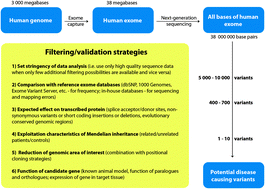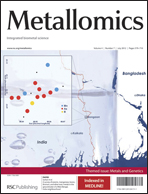Application of exome sequencing in the search for genetic causes of rare disorders of copper metabolism
Abstract
The genetic defect in a number of rare disorders of metal metabolism remains elusive. The limited number of patients with these disorders impedes the identification of the causative gene through positional cloning, which requires numerous families with multiple affected individuals. However, with next-generation sequencing all coding DNA (exomes) or whole genomes of patients can be sequenced to identify genes that are consistently mutated in patients. With this strategy only a limited number of patients and/or pedigrees is needed, bringing the elucidation of the genetic cause of even very rare diseases within reach. The main challenge associated with whole exome sequencing is the identification of the disease-causing mutation(s) among abundant genetic candidate variants. We describe several strategies to manage this data wealth, including comparison with control databases, increasing the number of patients and controls, and reducing the genomic region under investigation through homozygosity mapping. In this review we introduce a number of rare disorders of copper metabolism, with a suspected but yet unknown monogenetic cause, as an attractive target for this strategy. We anticipate that use of these novel techniques will identify the basic defect in the disorders described in this review, as well as in other genetic disorders of metal metabolism, in the next few years.

- This article is part of the themed collection: Metals and Genetics

 Please wait while we load your content...
Please wait while we load your content...